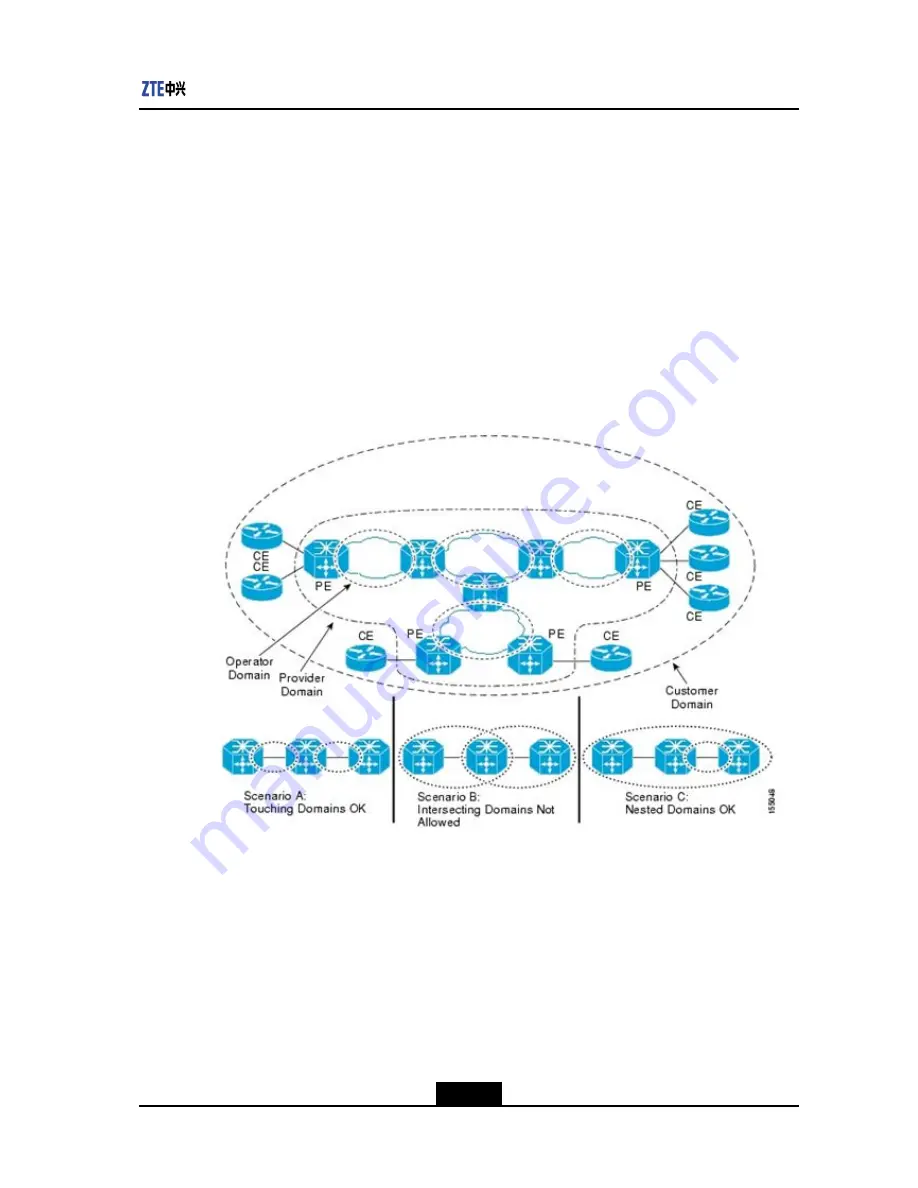
Chapter 4 Service Configuration
In the domain shown in
Figure 4-56
, a series ports are defined on peripheral and internal
devices. The grey ports on the peripheral devices are service ports connected to the
external devices and therefore are named Maintenance association End Point (MEP). The
other black ports (including those on intermediate devices) connect internal devices and
therefore are named Maintenance Domain Intermediate Point (MIP). The management
function is implemented through the defined MEP and MIP.
As shown in
Figure 4-57
, a network is divided into a customer domain, provider domain,
and operator domain. A level between 0-7 is designated for each domain. The domain
level determines the inclusion relation between domains. A domain with a higher level can
include domains with lower levels but not vice versa. The domains with the same level
cannot include each other. This means that all domains can be tangential (internally or
externally) and inclusive but cannot be intersecting.
Figure 4-57 Domains in the Network
The message types defined in the CFM protocol include:
l
Continuity Check Message (CCM): A multicast CFM protocol data unit.
It is
periodically sent by an MEP to confirm the connectivity of MEP in the same MA. An
MEP receiving a CCM message does not reply to this message.
l
Link Trace Message (LTM): A multicast CFM protocol data unit. It is sent by an MEP
to trace the path from the MEP to the MP. Each MP along the path generates an LRT
as a response. This ends until the message reaches the destination or cannot be
further forwarded.
l
Link Trace Reply (LTR): A unicast CFM protocol data unit. It is sent by the MP receiving
an LTM to reply to the LTM.
4-139
SJ-20120409144109-002|2012-07-02(R1.0)
ZTE Proprietary and Confidential
















































